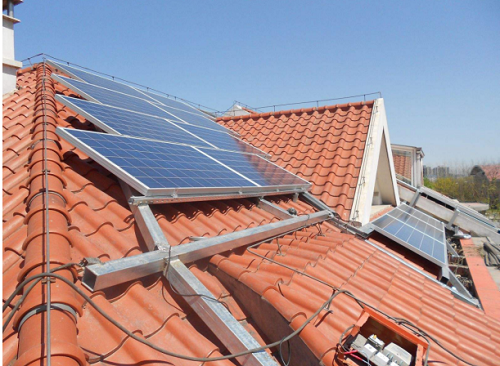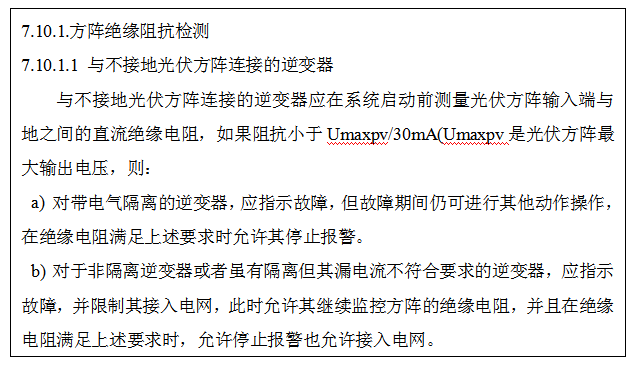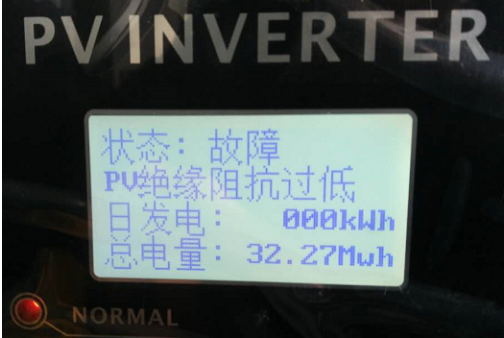Low insulation resistance of photovoltaic systems with low power generation
After the installation of the PV system, the user is most concerned with the amount of electricity generated, because it is directly related to the user's return on investment. There are many factors affecting the amount of power generation, components, inverters, cable quality, installation orientation azimuth, tilt angle, dust, shadow occlusion, component and inverter ratio system solutions, circuit design, construction, grid voltage, etc. Factors are possible. This series of articles will explore various factors based on actual cases. This paper mainly discusses the effect of low insulation resistance on the system.
Case scene


This is the photovoltaic poverty alleviation power station project in Lishui Town, Daning County. One inverter shows “insulation insulation is too lowâ€. This means that the inverter detects that the insulation resistance of the positive or negative ground to the ground is too low, indicating that the DC-side cable or component has an abnormal insulation resistance to ground. Detecting the insulation resistance of the square array is a mandatory standard and requirement for the inverter. When the insulation resistance of the PV array is detected to be less than the specified value, the inverter must display the fault. The non-isolated inverter must be stopped and cannot be connected to the grid. .

NB/T 32004-2013 Standard Terms
2, theoretical analysis
The principle of the inverter detecting the insulation resistance is: the inverter calculates the resistance of PV+ and PV– to ground by detecting the PV+ ground and PV-to-ground voltage respectively. If the resistance of any side is lower than the threshold, the inverter It will stop working and the alarm will show "PV insulation impedance is low".
Low insulation resistance is a common fault in photovoltaic systems. The components, DC cables, and connectors are damaged, and the insulation layer is aged to produce low insulation resistance. When the DC cable passes through the bridge, the outer edge of the cable may be in the process of threading due to barbs on the edge of the metal bridge. Destruction, resulting in leakage to the ground.
Low insulation resistance: low insulation resistance will cause leakage of the system. If the inverter is still connected to the grid for power generation, it will cause the electrical equipment casing to be charged, which will bring people a safety hazard. The fault will be discharged to the ground. Causes local heat or sparks, which may cause safety hazards such as fire.

3, the solution
For the "PV insulation impedance is too low", the following treatment methods can generally be used:
1) On-site inspection of the component's DC cable and grounding
First, the reason for the abnormality of the insulation resistance is caused by breakage of the DC cable, including the cable between the components, the cable between the components and the inverter, especially the cable of the corner and the line without the open pipe laying. Cables, all need to carefully check the cable for damage. Secondly, the photovoltaic system is not well grounded, including the component grounding holes are not connected, the component clamps are not in good contact with the brackets, and some of the branch cable casings are flooded, which will result in low insulation resistance.
2) relying on the inverter to check the string by line
If the DC side of the inverter is multi-channel access, you can use the method of checking one by one to detect the components. Only one string of components is reserved on the DC side of the inverter. After the power is turned on, check whether the inverter continues to report errors. If the error is not continued, It indicates that the connected components have good insulation performance. If the error is continued, it is very likely that the insulation of the string components does not meet the requirements. Or, for example, a 20KW inverter is connected to 4 channels, and a certain way is pulled out. If the fault alarm disappears, the string is faulty.
3) Serial detection using a shaker or other professional equipment
During the on-site inspection, the PV+/PV-ground insulation resistance of the component side is measured one by one with a shaker. The impedance needs to be greater than the threshold value of the insulation resistance of the inverter. In some projects, special insulation measurement equipment can also be borrowed.
to sum up:
Before the component is connected to the inverter, it must first detect the insulation resistance of the string to ground. This is a very necessary and cannot be omitted step.
1.Use national standard eco-friendly ABS plastic for main material to make faucet and taps.
2.Providing thoughtful innovations and inspirational designs for different kinds faucets.
3.Using high technical equipments and machine to process superior quality faucet and taps
4.Applying with high standard polishing and electroplating surface treatments .
5.Checking in every production processes with modern testing machines to insure the quality.
6.Employing skilled and responsible engineers and workers for faucets design and produce.
7.Establishing the key management team to satisfied the customers all all over the world .
Plastic Faucet,Deck Mounted Plastic Faucets,Kitchen Plastic Faucet,Plastic Water Faucet
Yuyao Sanyin Bathroom Technology Co Ltd , https://www.chinasanyin.com